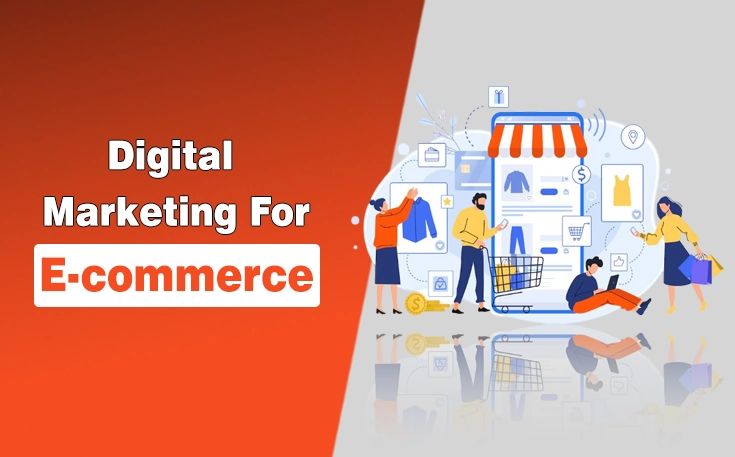
In the fast-paced world of e-commerce, the right digital marketing strategy is not just an advantage — it is a necessity. Online stores must stay ahead of the competition through data-driven marketing tactics, customer-centric campaigns, and advanced automation tools. In this comprehensive guide, we outline everything e-commerce brands need to thrive in today’s digital landscape.
Understanding the Core of E-Commerce Digital Marketing
At the heart of any successful e-commerce business Rehan Hasan lies a strong digital marketing foundation. Unlike traditional marketing, digital marketing for e-commerce focuses on building an integrated online presence, capturing leads, converting visitors into customers, and fostering loyalty.
Key Objectives of Digital Marketing for E-Commerce:
Drive high-quality traffic to your store
Improve conversion rates and reduce cart abandonment
Build a recognizable brand identity online
Retarget past visitors and customers
Leverage analytics and customer data for smarter decisions
Search Engine Optimization (SEO) for E-Commerce Success
SEO remains the cornerstone of sustainable digital growth. Without proper optimization, even the most beautiful e-commerce sites will remain invisible on Google.
On-Page SEO Techniques:
Use long-tail keywords in product titles, descriptions, and metadata
Optimize URL structures with target keywords
Include image alt texts and reduce load times for better UX
Create unique, keyword-rich product descriptions
Technical SEO Essentials:
Ensure mobile responsiveness
Use structured data markup (Schema.org) for product details
Fix crawl errors and maintain a clean site architecture
Implement HTTPS encryption
Content SEO Strategies:
Launch a blog to rank for informational keywords
Create category landing pages with SEO-friendly content
Build internal linking between blog, category, and product pages
Pay-Per-Click Advertising (PPC) for Immediate Visibility
Google Ads and social media PPC campaigns offer instant access to potential buyers. With the right targeting and ad creatives, you can rapidly scale.
Effective PPC Tactics for E-Commerce:
Use Google Shopping Ads to showcase products visually
Implement Dynamic Remarketing Ads for cart abandoners
Split-test multiple ad creatives and headlines
Apply audience segmentation for precision targeting
Monitor cost-per-acquisition (CPA) and adjust bids accordingly
Content Marketing That Educates and Converts
High-quality, strategic content builds trust and encourages repeat visits. E-commerce brands should position themselves as authorities in their niches.
Top Performing Content Formats:
How-to guides and tutorials featuring your products
Customer case studies and testimonials
Product comparison articles
Gift guides and seasonal content
Infographics for visual engagement
Consistently publishing SEO-optimized content increases organic rankings and supports social and email marketing campaigns.
Email Marketing: The Lifeblood of Retention and Conversions
Email remains one of the most profitable channels for e-commerce. A well-structured email strategy nurtures leads and strengthens customer relationships.
Essential E-Commerce Email Campaigns:
Welcome series for new subscribers
Abandoned cart reminders with product links
Post-purchase follow-ups and review requests
Seasonal promotions and exclusive offers
Loyalty rewards and VIP sneak peeks
Use automation tools like Klaviyo or Mailchimp to trigger emails based on customer behavior and lifecycle stage.
Social Media Marketing to Build Community and Drive Sales
A strong social presence fosters brand awareness and cultivates loyal shoppers. Each platform offers unique opportunities for e-commerce growth.
Best Practices by Platform:
Instagram & TikTok: Leverage reels, stories, and influencer collaborations
Facebook: Run targeted ads and host live selling events
Pinterest: Use visual pins and link back to product pages
YouTube: Post product unboxings and tutorials
Social platforms also allow retargeting through pixel tracking, helping recover lost conversions.
Influencer Marketing to Reach New Audiences
Collaborating with niche influencers introduces your brand to pre-built, engaged audiences. Choose influencers whose followers match your ideal customer profile.
Steps to Launch a Successful Influencer Campaign:
Define your goals: brand awareness, sales, or user-generated content
Use tools like Upfluence or Heepsy to discover influencers
Negotiate content types: reviews, unboxings, or giveaways
Measure ROI with UTM tracking links and promo codes
The authenticity and trust influencers provide can dramatically boost conversions.
Conversion Rate Optimization (CRO) for Maximum ROI
Driving traffic is only half the battle. You must convert visitors into buyers with a seamless, persuasive shopping experience.
Top CRO Techniques:
Use high-quality product images and videos
Display customer reviews and social proof
Offer free shipping thresholds and easy returns
Simplify the checkout process to reduce friction
Conduct A/B testing on landing pages and CTAs
A 1% improvement in conversion rate can lead to massive revenue gains.
Utilizing Analytics for Smarter Decisions
Data is the backbone of successful marketing. Regularly tracking and interpreting analytics helps identify what’s working and what’s not.
Key Metrics to Monitor:
Traffic sources and channel performance
Customer acquisition cost (CAC)
Conversion rate per product or campaign
Average order value (AOV)
Customer lifetime value (CLTV)
Use Google Analytics 4, Hotjar, and Meta Pixel for comprehensive insights.
Automation Tools to Scale Your Marketing Efforts
E-commerce marketers can no longer operate manually. Automation enhances efficiency, personalization, and scalability.
Top Automation Tools:
Klaviyo: Email and SMS automation
Zapier: Workflow integrations
HubSpot: CRM and marketing automation
Drip: Personalized email journeys
Tidio or Intercom: AI-powered chatbots for customer support
Automate tasks like email flows, retargeting ads, inventory alerts, and customer onboarding to save time and improve customer experience.
Final Thoughts: Create a Holistic Digital Ecosystem
The most successful e-commerce brands don't rely on just one strategy. They build an integrated system where SEO, content, email, social media, PPC, and automation work together to create a profitable digital machine. Investing in all areas of digital marketing and constantly refining your approach is the surest path to long-term growth.
Comments on “The Ultimate Guide to Digital Marketing for E-Commerce Stores”